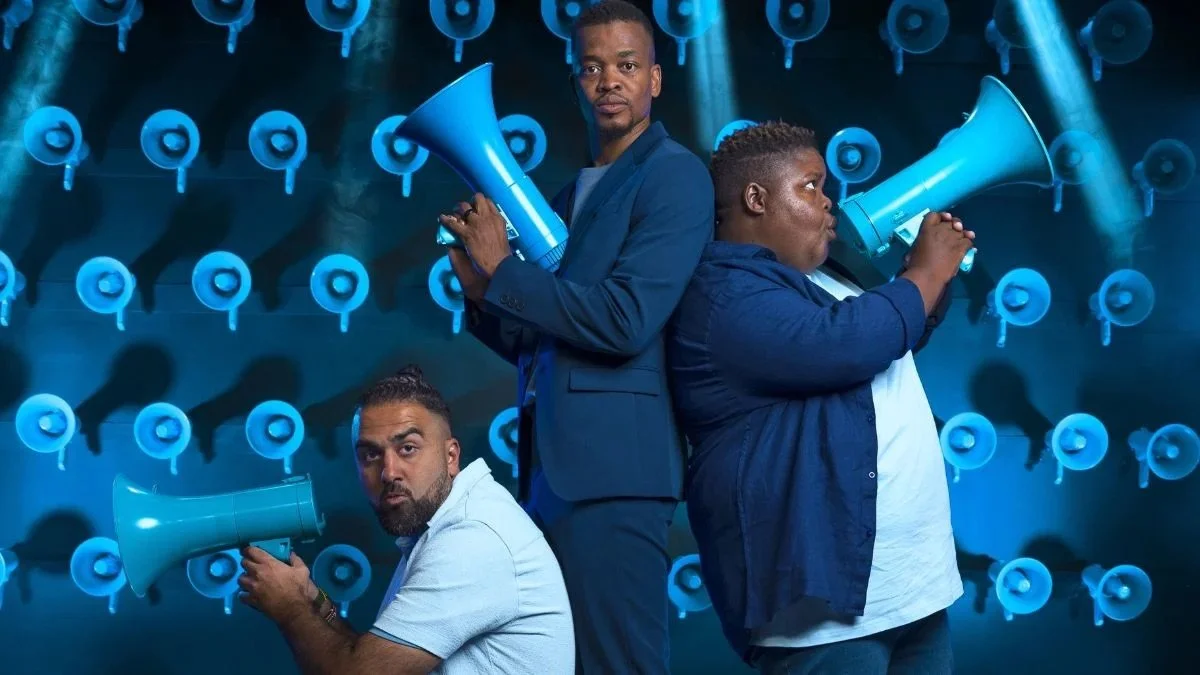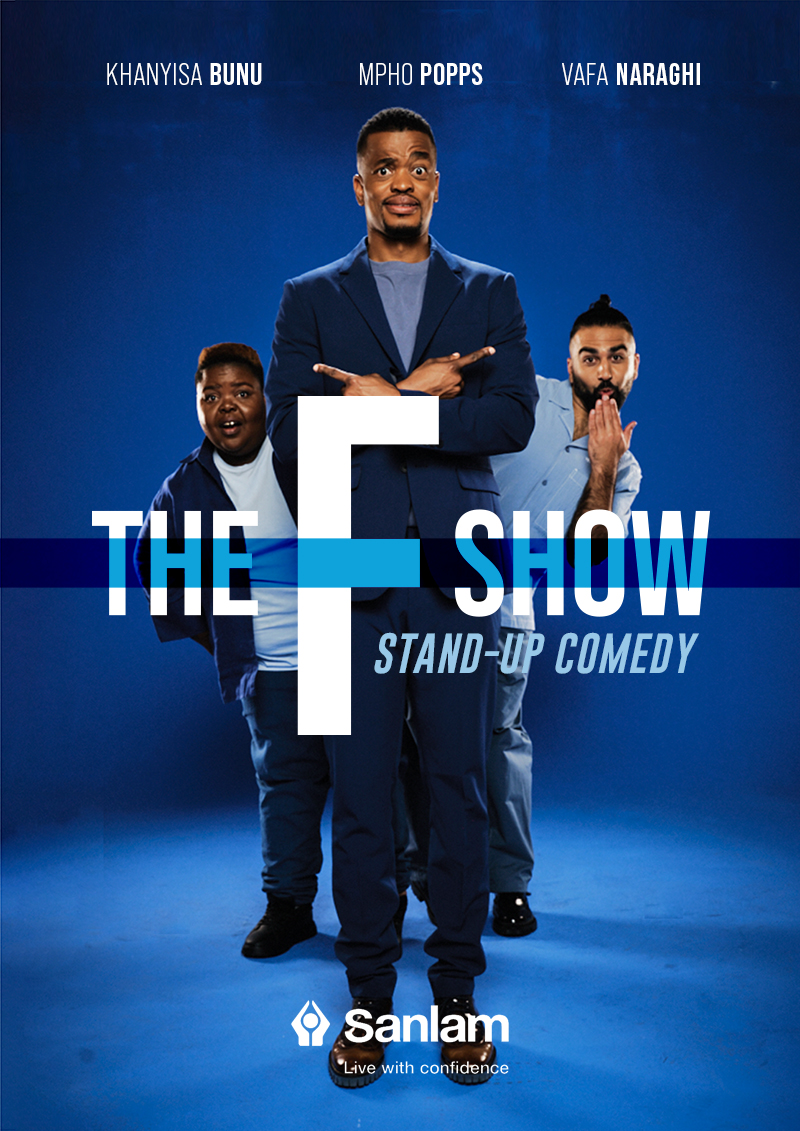“If you’re broke, you can’t be boring.”: Mariska Oosthuizen, Chief Marketing Officer at Sanlam
Challengers aren’t always number two, three or even 17 in the market. Being a Challenger isn’t about size, it’s about mindset; having ambitions that outweigh your resources. By our definition then Sanlam, the largest non-banking financial services organization on the African continent, is a Challenger through and through. Over 100 years old, this a brand that has had to consistently reinvent itself over time, consistently denying the assumptions of their audience to make financial literacy available to more people in order to help them live confidently. We spoke to their CMO Mariska Oosthuizen to uncover the many ways Sanlam breaks with the status quo and upends misconceptions in financial services.
At eatbigfish we talk about Challenger Brands as those who have a Challenger Mindset, whose ambitions outweigh their resources. So, while you may be the ‘big fish’ in your category, can you tell us about how the Challenger Mindset is harnessed within Sanlam?
As a business itself, financial services have a lot of parity. So, what we offer is not necessarily always that different. It's in the how we do that, that we try and be different, especially from a brand and marketing perspective. So even though Sanlam is, in many instances, the biggest player in South Africa, our spend is not necessarily aligned with that. We are outspent massively by many of our direct competitors. So, we have to be smart about how we approach our brand and marketing to try and break through in a very cluttered and competitive environment.
Whenever we do a marketing campaign, we always start with a core consumer insight. What is the thing that we're trying to solve? And then we look for different and innovative ways to do that. So, what is the latest technology that we can use, or what's a different way of doing it? And we've been doing that for many, many years with great success. For example, years ago, we did one of our first digital marketing campaigns called the One Rand Man, which was a kind of social experiment where we got a guy to live his entire life for a month using only one Rand coins. The insight there was that people don't connect with their money anymore. We're so used to just swiping, and we don't really know what we spend our cash on. So, if we can get people to connect to their money again, they'll think differently about how they spend it. There are many examples of those campaigns throughout the years where we went, ‘Okay, so what's the real thing we want to do here? What do we want to solve?’ And then, ‘How do we find an innovative way to approach that, to break through the clutter?’
We have an internal saying at Sanlam, ‘If you’re broke, you can't be boring.’ So, because we don't have a big budget, we need to make sure that we break through with what we have and do things differently and make people sit up and take note.
How do you find those insights?
We find them in in different ways. Of course, we run research constantly. Now, with our new positioning, live with confidence, which we launched in 2021, we've launched what we call the Confidence Index. It’s primary proprietary research that we run once a year where we try and uncover what feeds into financial confidence. What are the things that people need to have to be financially confident, and how are we stacking up in terms of things around resilience and long term views and talking about money. And actually, the latest campaign that we ran The F-Word, came from an insight in that piece of research that shows that people don't talk about money. And there's a lot of research that shows if people do talk about money, they're so much better off.
However, I don't think insights always just come from a traditional research study. I think they often just come from listening to people who are your market, some of the younger members in your team and understanding what some of the underlying things are from a financial perspective that are stopping people from planning long term and providing for their future.
What audience assumptions does The F-Word campaign deny? Tell us more about the campaign.
The core assumption was that we shouldn't talk about money. Money is a taboo subject. It's uncomfortable. It's got a lot of negative emotions attached to it, and therefore, we should just avoid the subject. It's better if we avoid it. For a lot of people, finances are like a dirty secret or a dirty word. We just don't want to deal with it, but we at Sanlam know the opposite is true. We try to break with people’s assumptions to say, ‘Yes, we know you feel this way about your money, and it is probably because of the way you were brought up, and society and where we are. Sometimes it has to do with guilt of having too much. Sometimes it has to do with guilt of just not having enough.’
So, we took that assumption, and we contrasted it with this idea of, let's talk about money. Let's make sure that people don't see money as a swear word. And then we wrapped it in a bit of a lighter side, where we got some comedians involved. They created a whole show for us and we hid financial literacy inside the content. We sold it as a normal comedy show and we sold out. People came, they watched it, they laughed. And we did some vox pops afterwards asking, ‘If you were told to come and see a show about finance, would you do that?’ They were like – ‘Absolutely not.’ And then we revealed that there was a financial literacy concept that was wrapped in the show. So, we got people talking and engaging with the subject that they don't usually engage with.
That must have been quite a surprise for some people. Why do you think surprise in this context worked to get people talking about finance?
I think because the way financial services are usually approached is in a very traditional way. We can't make fun of finances. It needs to be very serious because it's a very serious matter. So, we take ourselves very, very seriously. But that's why surprise worked, because it was a completely different angle on it to wrap it in a comedy show. Let's talk about something very seriously, but with a little bit of lightness to it. And it's worked really, really well. People love the comedians. They love the lessons they learn and can see themselves in them. Also, it was very important to use comedians that your audience associates with. They were very authentic as well. We didn't write the show for them. They wrote the show on their own. We gave them a couple of the key things we would like them to talk about, and then we set them free on it. And we only really saw the show when we were sitting in the audience. We unbranded the show and just let it happen, with the comedians saying what they needed to and then we used pieces of that show for Sanlam.
We find the misconceptions around finance, and then challenge them, because that's often what holds people back, right? ‘I don't have enough money to invest. Oh, I can't speak to an advisor because, you know, they wouldn't want to speak to me because I don't have enough money, or it's intimidating. It’s going to be scary to speak to this guy about finance, because he's just going to preach to me. I shouldn't talk about finance. It's a taboo subject.’ It's the way we've been brought up – as kids, our parents never talked to us about it. So, show the flip side of that.
What are the barriers, internally or externally, to Sanlam achieving its brand strategy and how do you push past them?
Finance is not a very exciting subject to talk about. It's really hard to sell finance and especially longer-term financial planning and insurance. They are tough topics. People don't want to talk about insurance because it's usually linked to something that happens in life that you don't really want to think about. They are big, heavy topics to deal with and people don't want to engage with them. So, it is about finding ways to get people to engage with them and doing that in a more authentic and more human way. I always say it's a lot easier to sell a chocolate bar or a cold beverage that people are interested in, than to try and get them to engage with some of these heavy topics that we have to get them to engage with.
It's about having a diverse team that's very empowered. Diversity is so important, especially in in a country like South Africa with its 13 official languages. We always make sure that we've got a good, diverse team that comes from different backgrounds with different perspectives, then we create an environment where people can bring those perspectives to the discussion. And then what's very important is the people who you partner with. I believe in partnering with strong creative agencies that can come up with big ideas, and that challenge us, rather than having to push them. Because otherwise, if you don't do that, they're going to just bring you what you want and what you expect, and that's not going to leave you in any good space. So, I think it's about diverse perspectives, opportunities for that, and then having a good relationship with your agency.
What’s next for Sanlam?
We need to take this new digital business model of ours to market. So, how do we take a brand that is known for life insurance and investments, that's quite traditional into a completely innovative, digital, modern, aspirational kind of space.
I’ve adopted the eatbigfish idea about fighting bland, dull advertising, because imagine a world where every piece of communication you saw when you're driving, when you're listening, when you’re scrolling, was something that entertained you or left you with a lesson or made you feel better, or surprised you or delighted you – life would be so much better. Currently, most people just want to disengage with communication, because there's just so much of it.
As we step into this new fintech world, we will be competing with anyone that can give you an amazing digital experience. So, it's everyone and anyone. It's the technology companies. It's the really great retailers that deliver your groceries to your door in 60 minutes. It is entertainment companies, the Netflixes of the world. Those are the guys that we need to compete with, the ones that grab attention. Consumers don't distinguish between a financial experience, an entertainment experience and a retail experience. They expect their experiences to be amazing no matter who it is. More and more we are competing with the tech companies, the retailers and the entertainment companies, rather than financial services.



